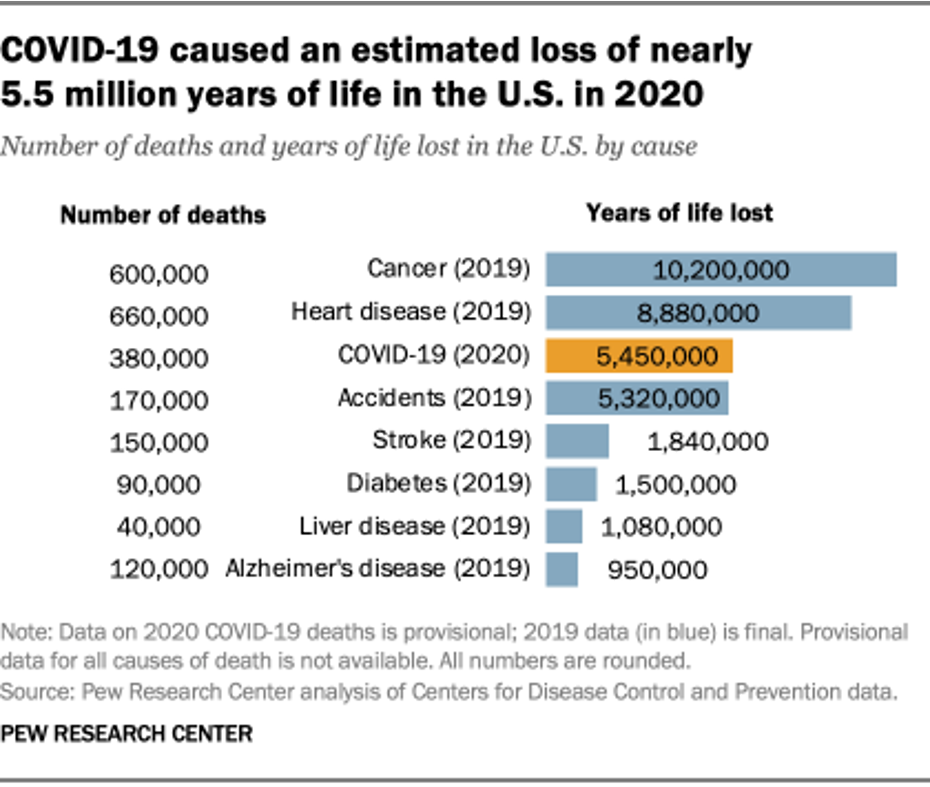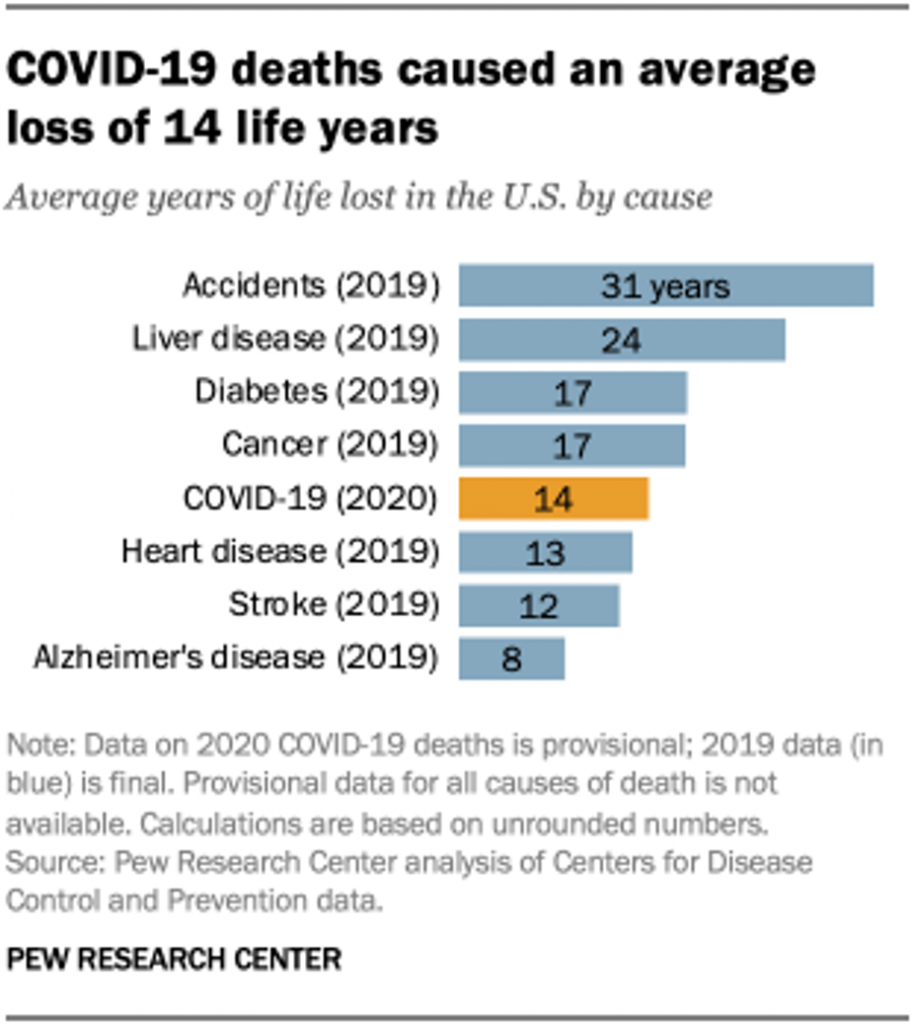In 2020 in the U.S., 380,000 people are expected to die due to COVID-19. These people lost due to the coronavirus would, collectively, have lived another 5.5 million life-years would they not have succumbed to the virus.
 COVID-19 has cut lives short relative to their life expectancy, calculated in an analysis by the Pew Research Center based on CDC data from 2019 and 2020, coupled with additional statistics on life expectancy by age and gender.
COVID-19 has cut lives short relative to their life expectancy, calculated in an analysis by the Pew Research Center based on CDC data from 2019 and 2020, coupled with additional statistics on life expectancy by age and gender.
The bottom-line from the Pew Research Center’s analysis, simply stated, is that,
“The pandemic…has killed many Americans who otherwise might have expected to live for years or even decades longer. A 65-year-old who dies from COVID-19 might ordinarily have expected to live until 85 – a difference of two decades, or roughly a quarter of the average American’s total expected life span at birth.”
The first chart lists causes of death in the U.S. for 2019 (2020 for COVID-19) by the numbers who succumbed to the cause and Pew’s calculations on the years of life lost for each group.
The 5.5 million lives represent, in Pew’s words, “the extent to which the virus has cut Americans’ lives short.”
In this case, 5.5 million years exceeds those years forsaken by people who died due to accidents in 2019.
 In fuller context, deaths due to accidents occur among younger people in the U.S.; the second chart shows the sad data point on that, with an average of 31 years of life lost to people dying due to accidents in the U.S.
In fuller context, deaths due to accidents occur among younger people in the U.S.; the second chart shows the sad data point on that, with an average of 31 years of life lost to people dying due to accidents in the U.S.
Diabetes and cancer patients who succumb to death lose 17 years of life.
For COVID-19 patients who die due to the virus, 14 years of life are lost.
This is roughly equal to lives lost to death from heart disease,
Health Populi’s Hot Points: The fact about accidents over the past several years is that they can be considered part of the growing epidemic of Deaths of Despair — peoples’ lives being cut-off too soon due to accidents, suicide, and substance overdosing.
COVID-19 has emerged as a contributor to Deaths of Despair due to job losses, economic downturn for families, and social isolation which in particular has been a core risk for people who have died in one of the three ways defined as Deaths of Despair.
The Institute for Family Studies has been thinking about this phenomenon. They note the risk factors of increased alcohol and drug use during the pandemic, along with fast-rising sales of guns.
The COVID-19 pandemic has also shined a stunning bright light on health disparities and inequities in the U.S., with greater risk of deaths due to the coronavirus experienced among people of color, this Lancet essay details.
In thinking about the excess life-years lost to people who died due to coronavirus complications, we must also recognize that people of color have been asymmetrically tragically impacted in this way — as over-indexing in the death statistics for COVID-19, but also in terms of life-years lost.
The Lancet author-team concludes: “An appropriate response to the COVID-19 pandemic should be to address the root causes of health inequality, including racism and socioeconomic disparities. Without timely structural interventions, countries with wide disparities like the US and the UK might be forced to grapple not only with this public health crisis, but additional increases in ‘deaths of despair’ from other causes, including suicide, overdose, and food insecurity.”
The post 5.5 Million Years of Life Will Be Lost Due to COVID-19 in the U.S. in 2020 appeared first on HealthPopuli.com.
5.5 Million Years of Life Will Be Lost Due to COVID-19 in the U.S. in 2020 posted first on https://carilloncitydental.blogspot.com
No comments:
Post a Comment